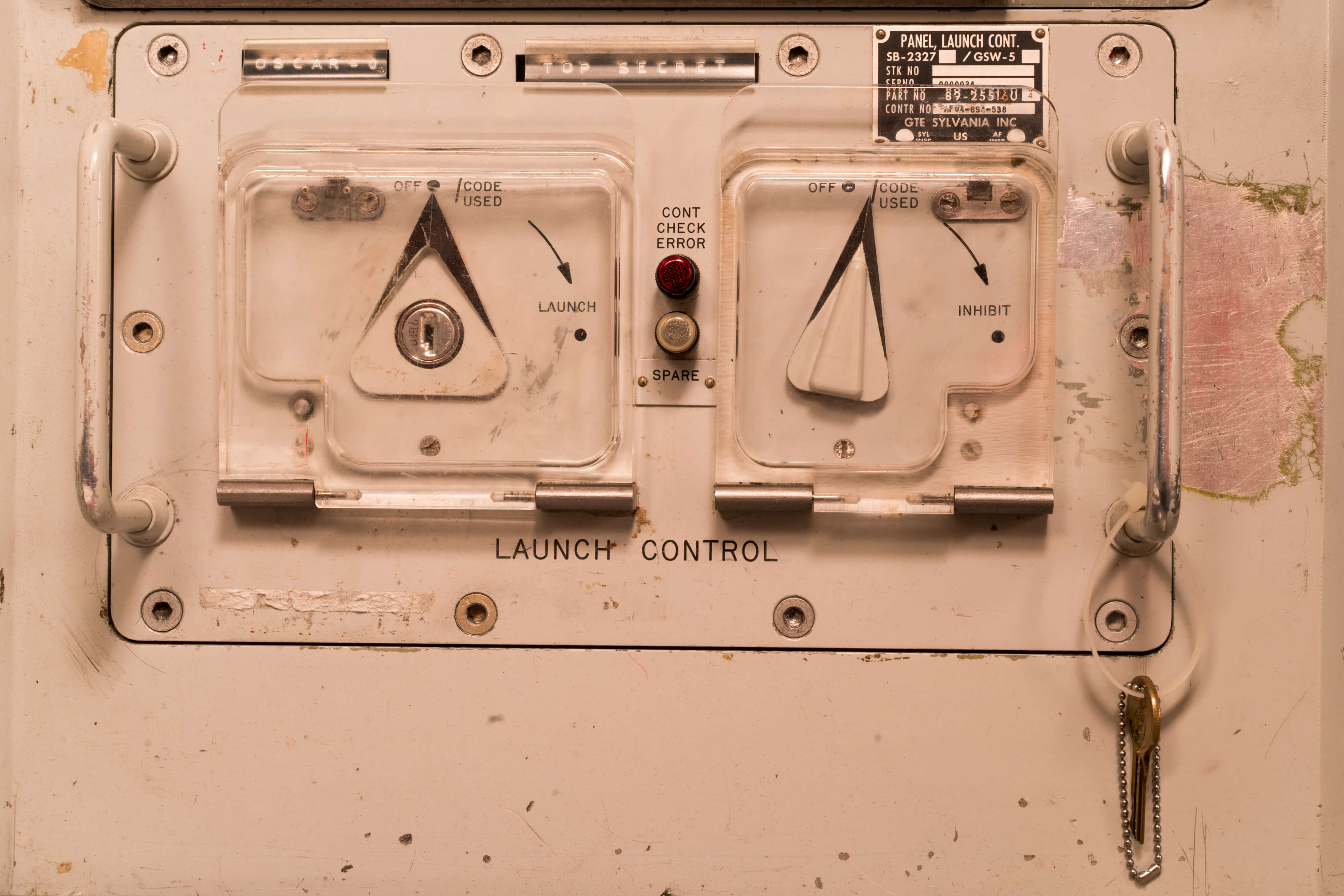My button is bigger than your button…. but there is no button…
I don’t know about the North Korean command and control systems, but in all the Cold War era nuclear facilities I photographed in November in the United States for “Fallout”, my exhibition for the Nobel Peace Prize 2017, there wasn’t a big angry red button on a desk.
Instead, there were two key slots, one at the commander’s desk and the other at the deputy’s — deliberately far apart enough so that not one person can launch the missile and nuclear weapon. After the president gives the launch order and codes are read and verified, a red box with two keys is unlocked and the commander and first officer had to turn the keys within two seconds of each other. From then, it’s less than a minute for the missiles + warheads to blast out of their silos, and under 30 minutes to reach their targets in the Soviet Union.
This specific launch control panel I photographed here was used for the Minuteman II intercontinental ballistic missile. The ones on alert today in the US are the Minuteman III.
And the keys look like the ones you might have for your house windows… see the one I shot as installed at the exhibition.
The commander and his/her team were also never told where “target 1”, 2 or 3 were.
The “nuclear button” explained in a primer in the NYTimes today:
The Missile Control Center Commander’s launch control panel at the Oscar-Zero Missile Alert Facility, North Dakota, November 2017. (Photo: Sim Chi Yin for The Nobel Peace Center) @nobelpeacecenter
“Fallout” is on in Oslo till November 2018.
www.chiyinsim.com/falloutexhibitionopens
- with producer Gabriel Ellison-Scowcroft


